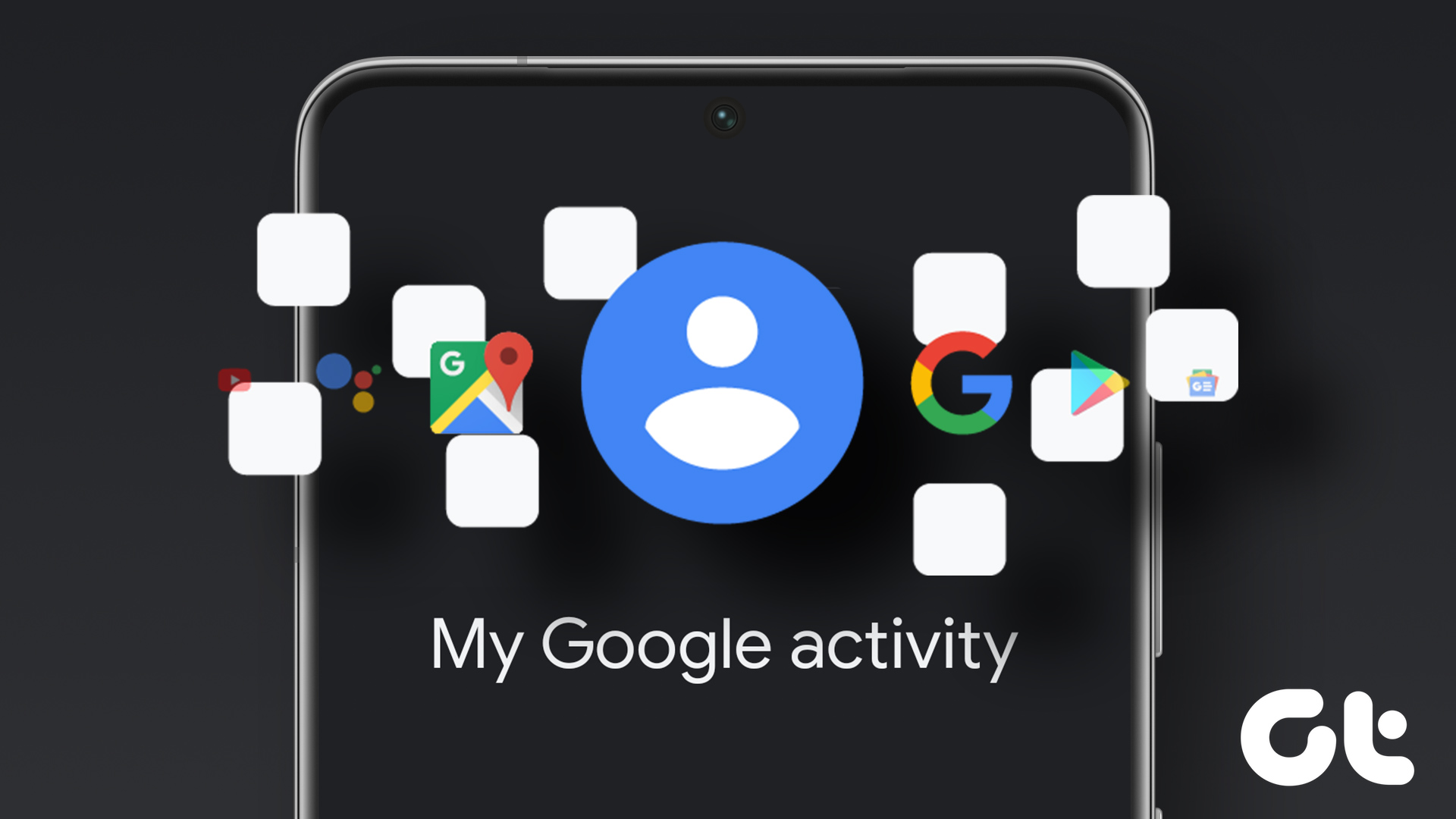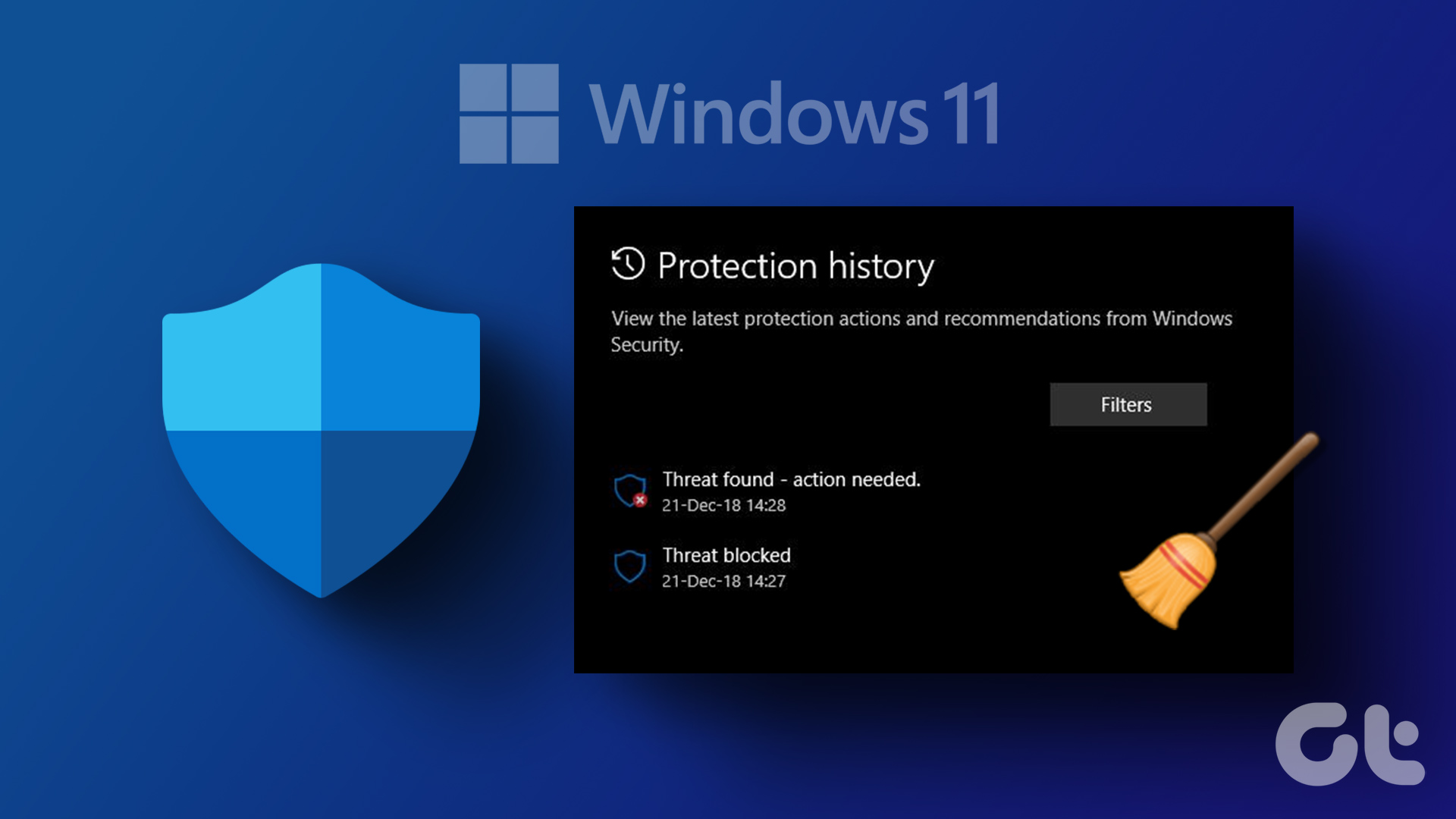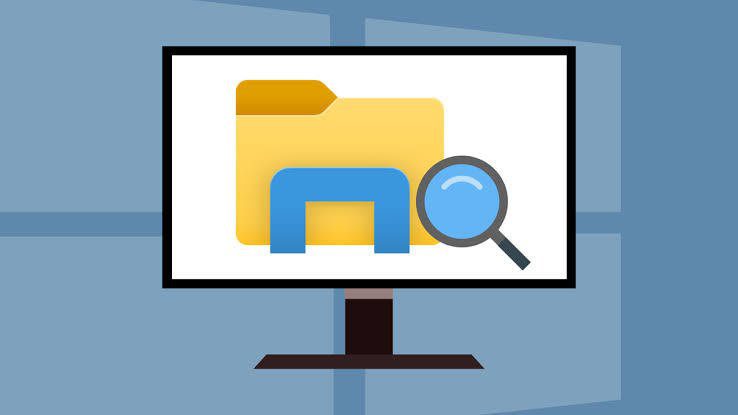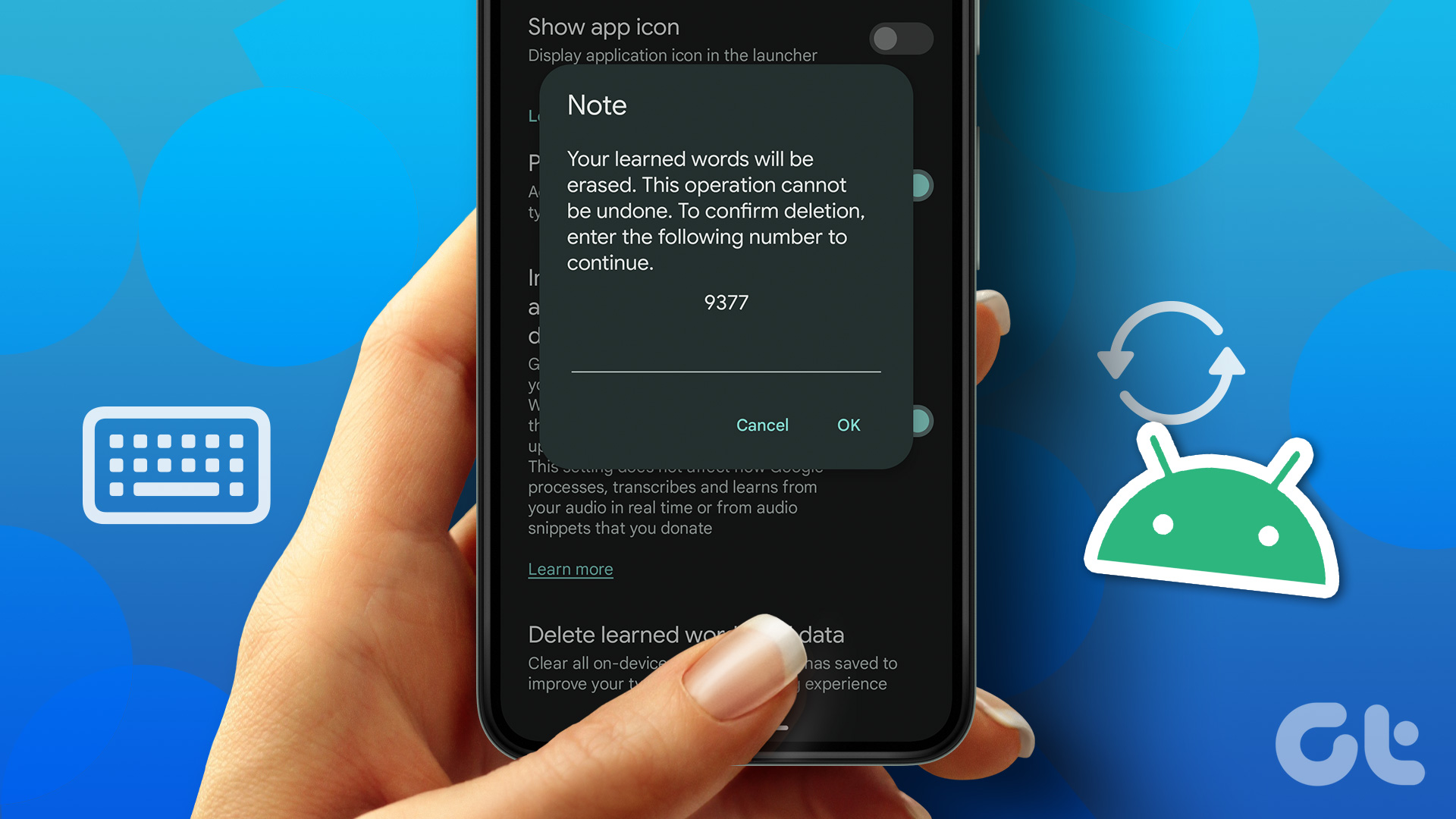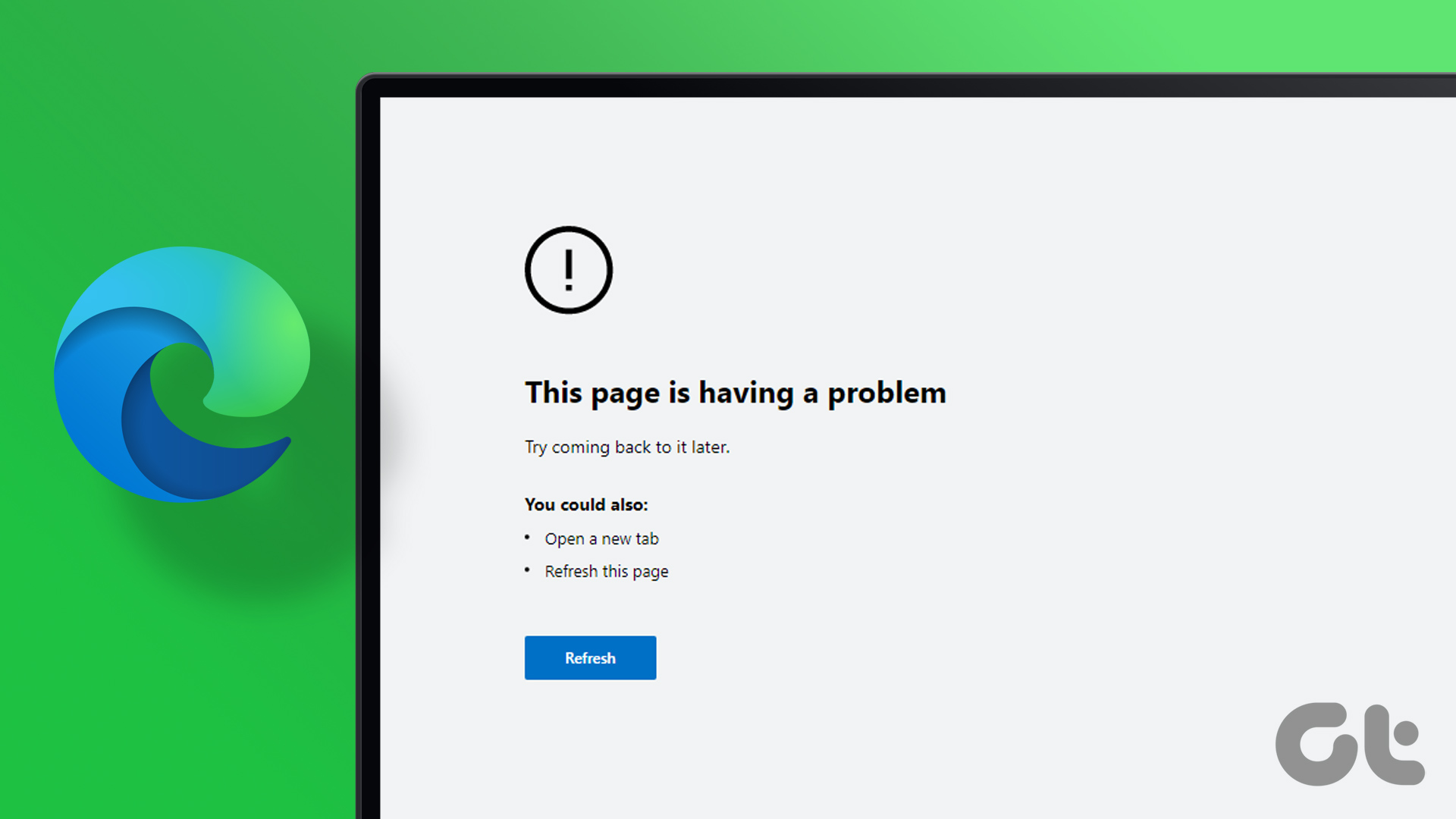Method 1: Clear Activity History for Your Account
Microsoft collects your activity history to improve the cross-device experience and provide relevant suggestions. It does so by tracking the apps, files you open, and websites you visit. This data is stored on your computer and cloud, so you can delete it from both places.
Here’s how to delete your account activity history.
Step 1: Press the Windows key + I to launch the Settings app. Then, click the Privacy & security tab > Activity History.
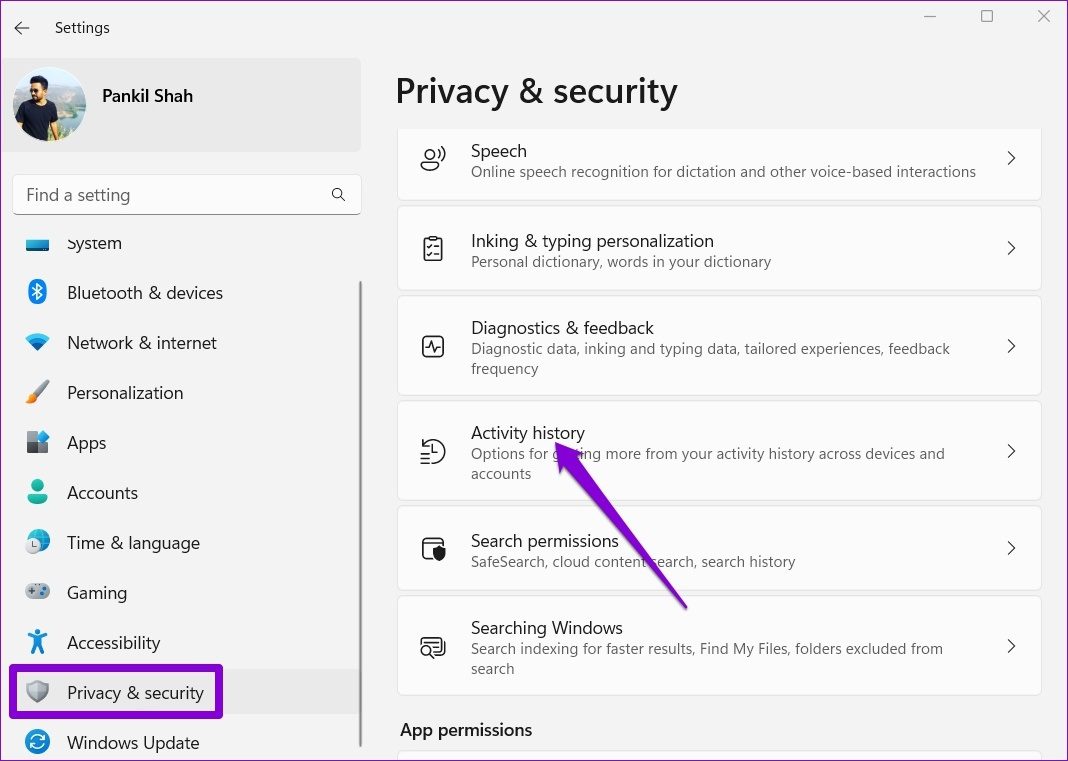
Step 2: Click the Clear history button to remove your activity history from your devices.
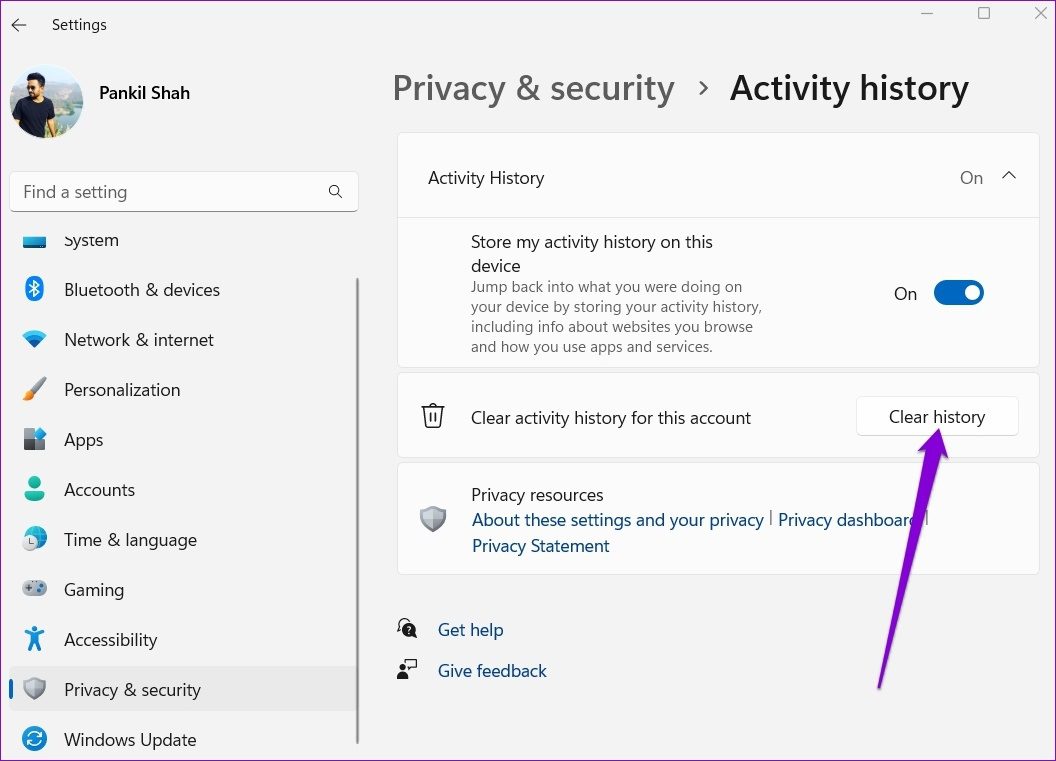
Step 3: You can optionally prevent Windows from storing your account’s activity history by turning off the Activity History option.
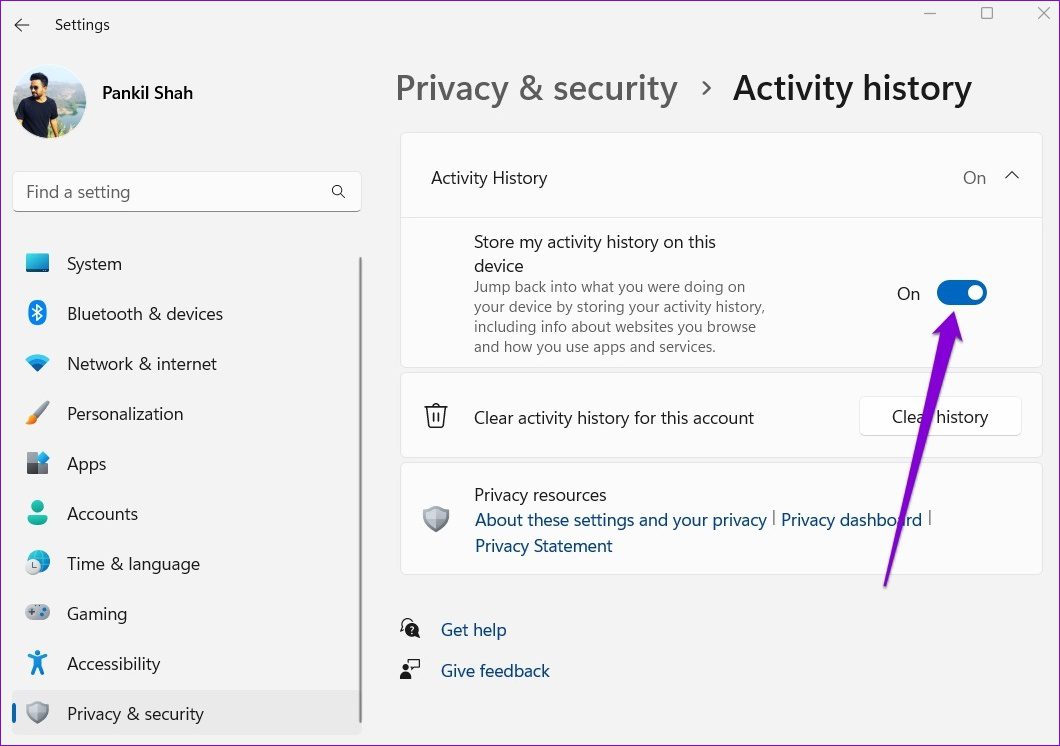
Method 2: Clear File Explorer History
File Explorer on Windows records all your searches to quickly remind you of your previous queries. As useful as this is, you might want to clear the File Explorer search history occasionally. Thankfully, it’s simple to do so.
Step 1: Press the Windows key + E to launch File Explorer.
Step 2: Click the three-dot menu icon at the top and select Options from the list.

Step 3: In the Folder Options window, click the Clear button next to Clear File Explorer history.
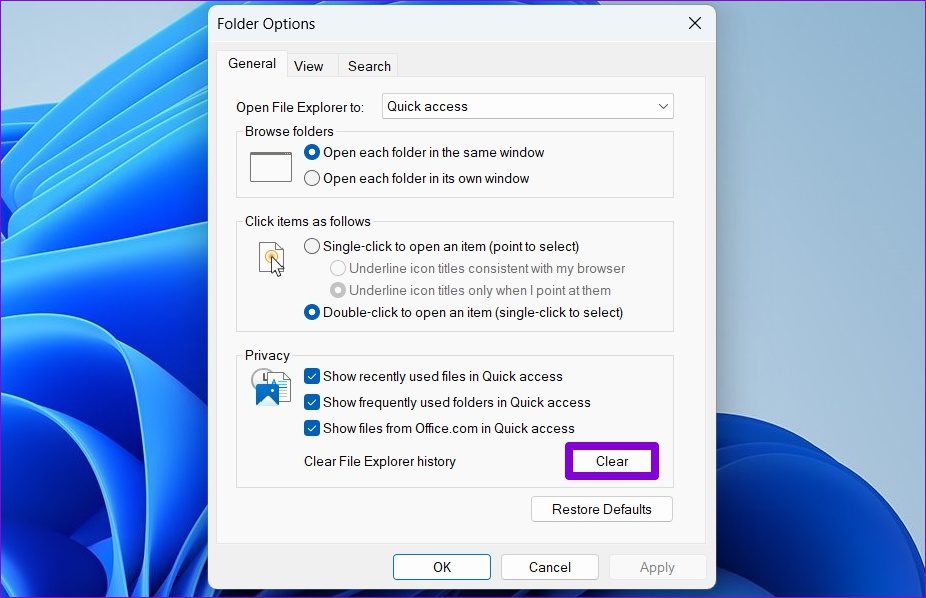
Alternatively, you can also remove specific search terms from File Explorer. To do so, click on the search box in File Explorer to view recent search terms. Then, click on the cross mark to remove the search term.
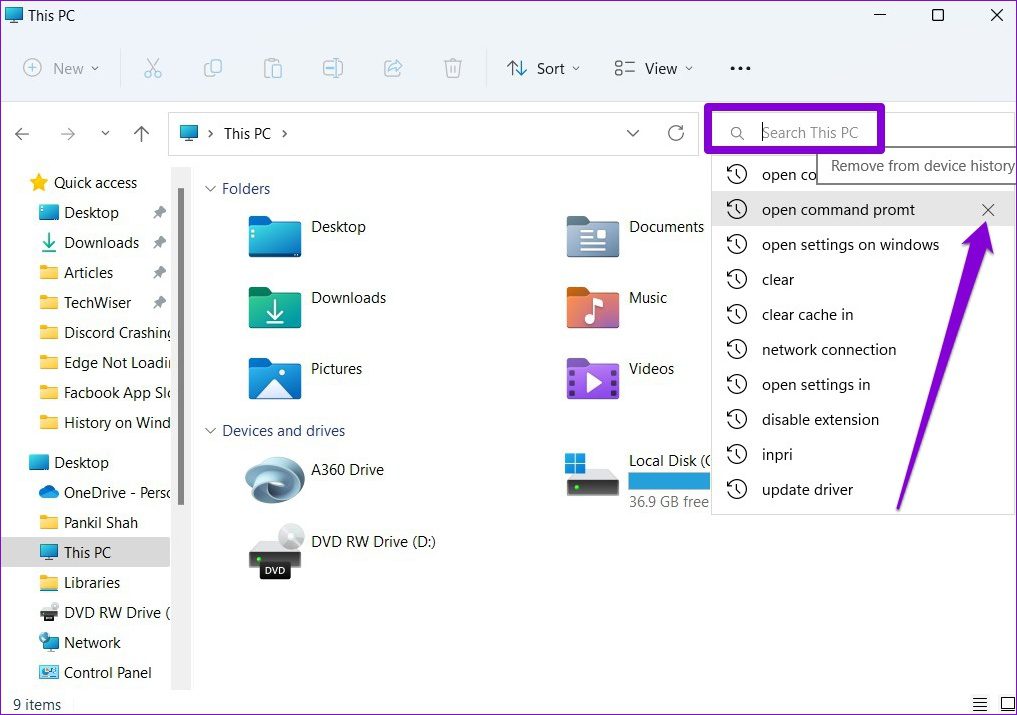
Method 3: Clear Search History
Windows 11 also logs all your searches through the search bar to improve suggestions. But if you wish to clear your past searches and start afresh, here’s how you do it.
Step 1: Open the Start menu and click the gear-shaped icon to launch the Settings app.
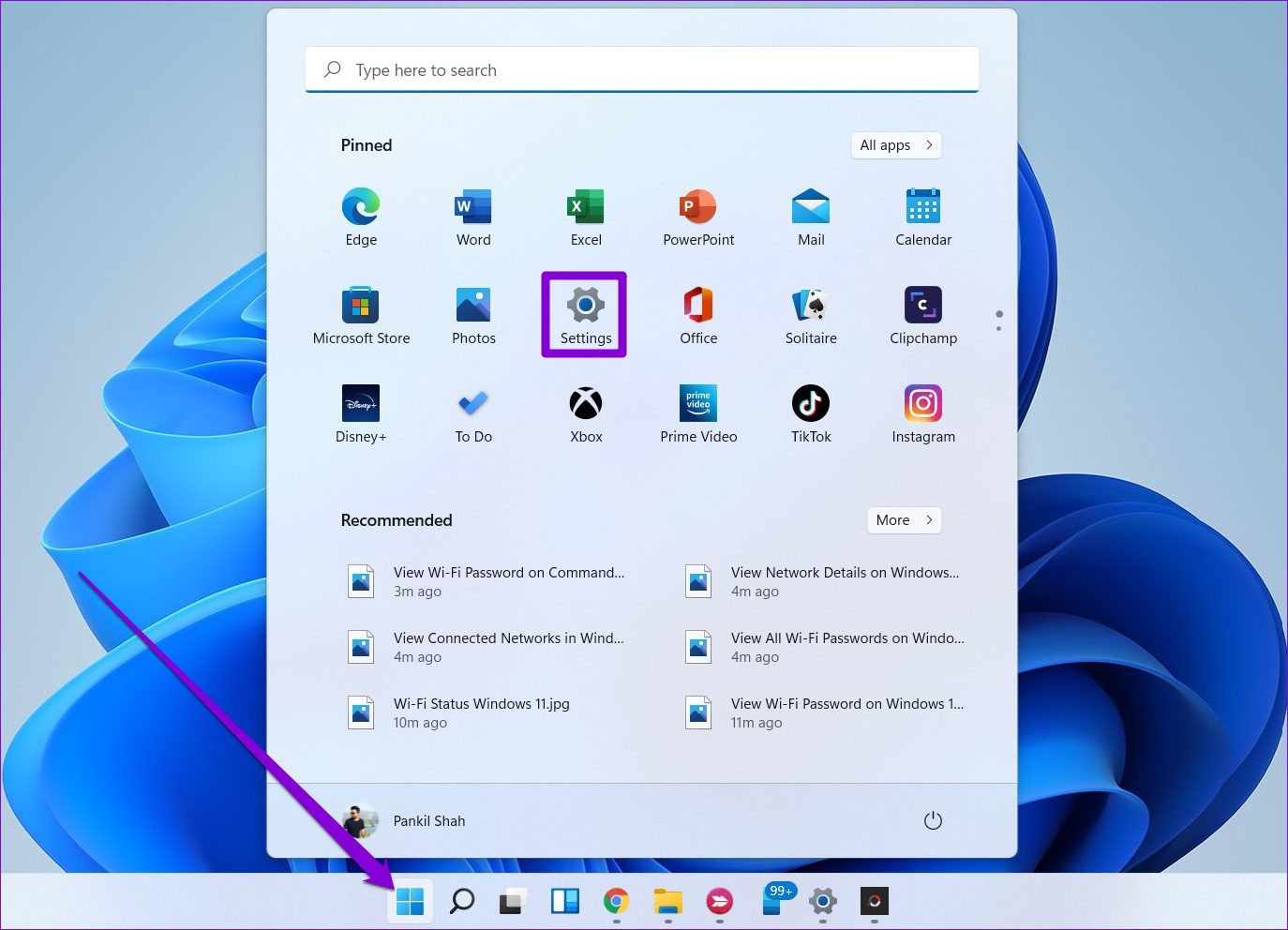
Step 2: In the Privacy & security tab, scroll down to click on Search permissions.
Step 3: Under History, click on Clear device search history.
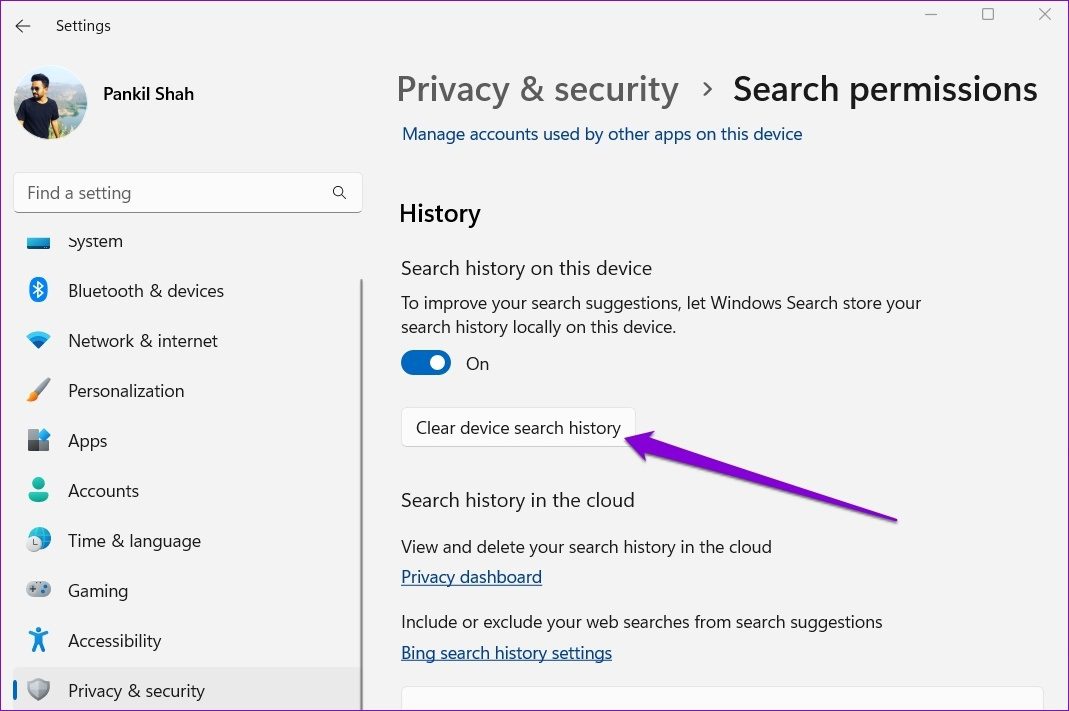
You can also clear individual search queries from Windows Search. For that, press the Windows key + S to open the Windows Search, then move the cursor over the search query you wish to delete and click on the cross icon at the end of the search query.
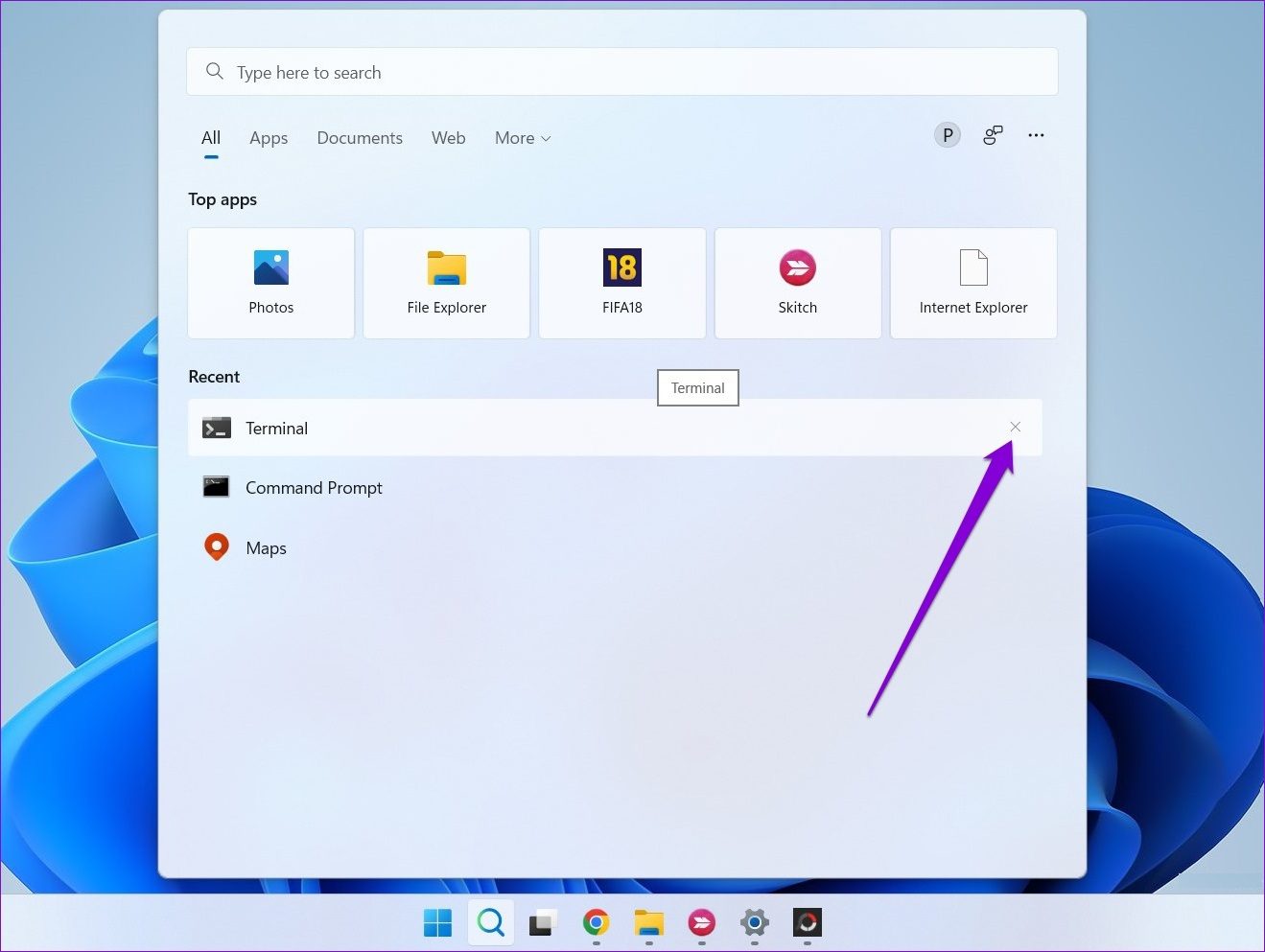
Method 4: Delete Location History
Apps on Windows rely on your location data to provide personalized recommendations and other useful services. For instance, widgets on Windows use your location data to provide local news and weather reports. Although this data is only stored for a limited period, you can delete it anytime by following the steps below.
Step 1: Right-click the Start menu and select Settings from the list.
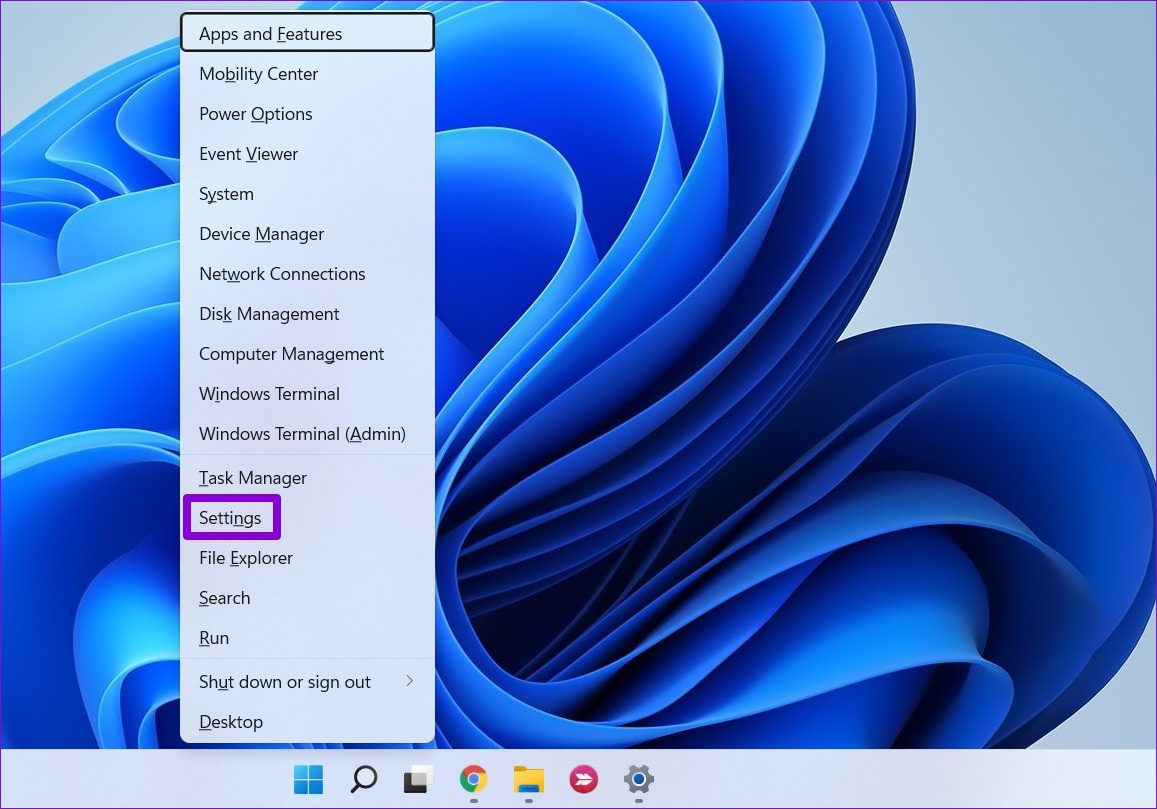
Step 2: Navigate to the Privacy & security tab on your left. Then, scroll down to App permissions and click on Location.

Step 3: Lastly, hit the Clear button next to Location history.

Further, you can also prevent apps from using your location data by toggling off Let apps access your location.

Method 5: Remove Update History
Windows 11 regularly receives software updates from Microsoft. It tracks the entire update history for your reference. But if you don’t find it useful, you may want to delete it altogether.
Step 1: Click on the search icon on the Taskbar, type cmd, and click on Run as administrator to open Command Prompt with admin rights.
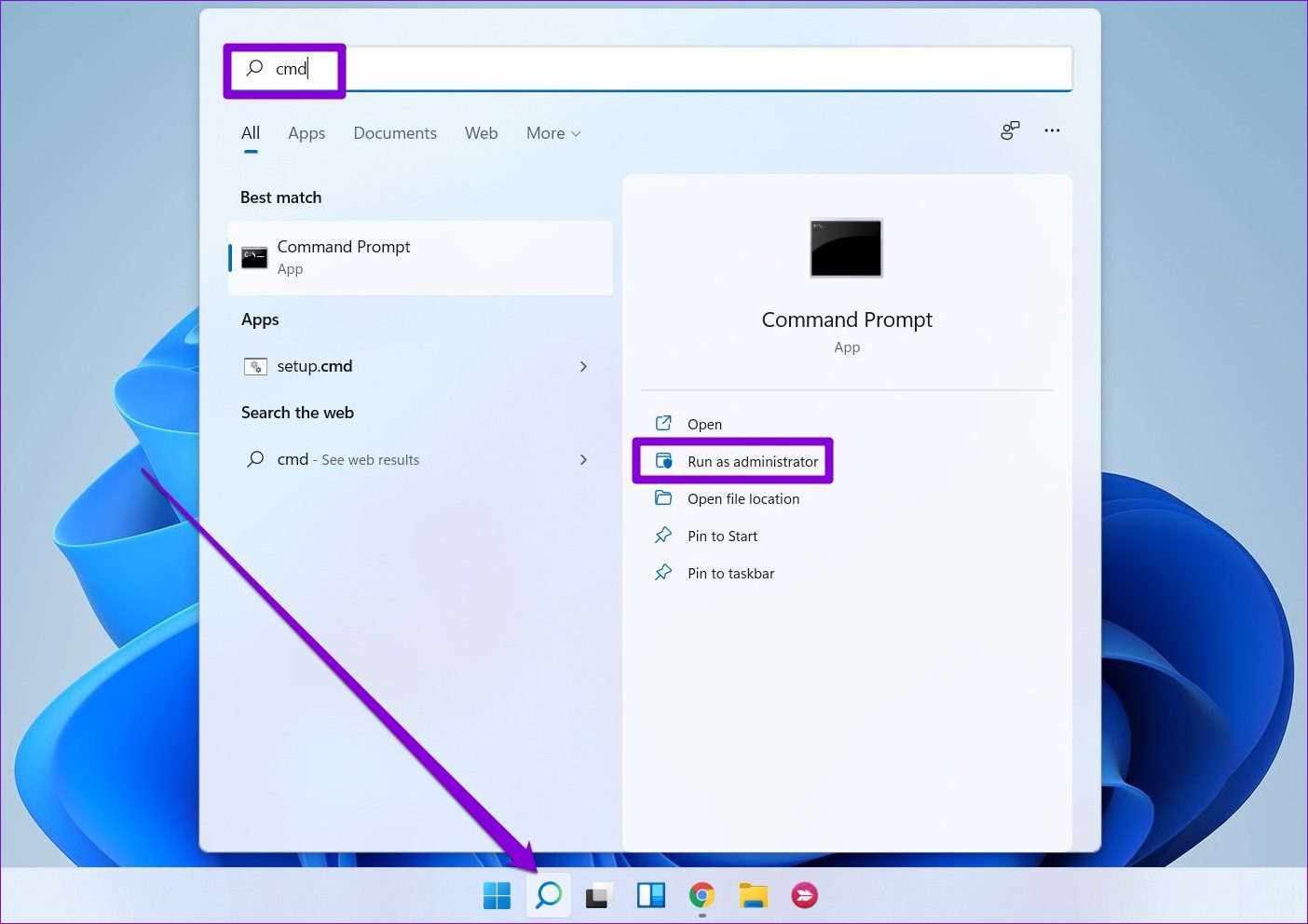
Step 2: Type the following command and press Enter to stop the Windows update service.
net stop wuauserv

Step 3: Next, run the following command to delete the log file containing the update history.
del C:\Windows\SoftwareDistribution\DataStore\Logs\edb.log

Step 4: Lastly, run the following command to start the Windows update service again.
net start wuauserv

All the Windows update history will be removed.
Was this helpful?
Last updated on 23 April, 2024
The article above may contain affiliate links which help support Guiding Tech. The content remains unbiased and authentic and will never affect our editorial integrity.

